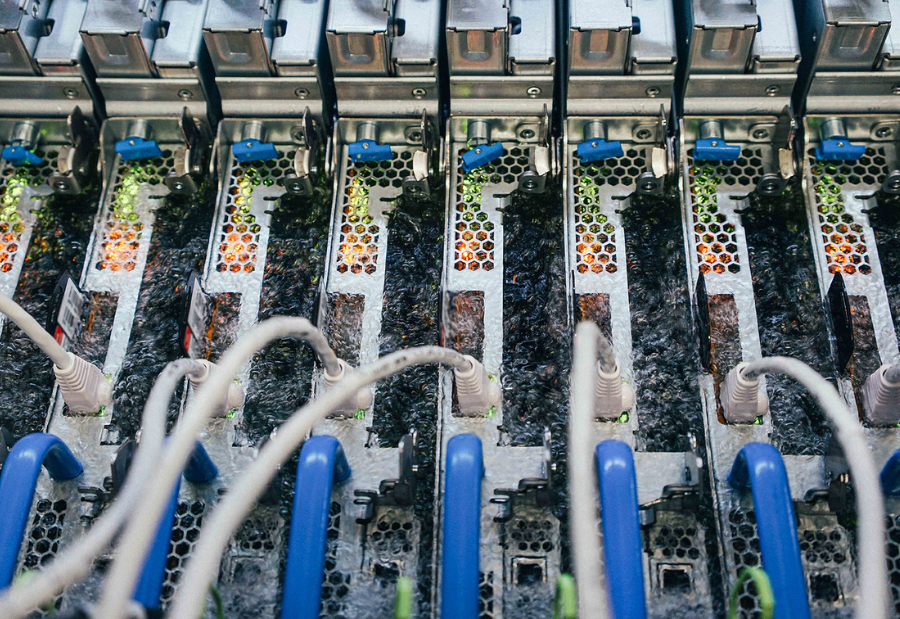Microsoft Corp. is experimenting with microfluidics technology to directly cool AI and server chips by sending fluid through tiny channels etched into the processors. This approach could address the high power consumption in AI data centers caused by overheating chips.
Husam Alissa, who oversees Microsoft’s systems technology, said the technology is being tested on server chips for Office cloud applications as well as graphics processing units used in AI tasks. Because the fluid is applied directly to the chips, it can operate at temperatures as high as 70C while remaining effective. Early tests at Microsoft’s Redmond campus have shown significant improvements compared to conventional cooling methods. The technology may also allow for stacking chips to create more powerful processors.
The initiative is part of Microsoft’s broader efforts to customize hardware in its expanding data centers, which added over 2 gigawatts of capacity in the past year. Rani Borkar, vice president of hardware systems and infrastructure for Microsoft’s Azure data centers, said efficiency is critical at such scale.
The microfluidics system could also enable overclocking, temporarily boosting chip performance during peak demand. Jim Kleewein, a Microsoft technical fellow, noted that this can help handle surges in usage, such as spikes in Microsoft Teams activity at the start of meetings.
In addition, Microsoft is deploying hollow-core fiber for networking to increase data transmission speeds. This technology uses air to transmit data instead of traditional glass fiber. Jamie Gaudette, part of the cloud network engineering team, explained that a small piece of this material can stretch several kilometers, and Microsoft is working with Corning Inc. and Heraeus Covantics to scale production.
On the memory front, Microsoft is exploring high-bandwidth memory (HBM) for AI computing, used in the company’s Maia AI chip. Borkar emphasized HBM’s importance and hinted at future developments in memory technology.
“With AI and cloud workloads growing rapidly, cooling, network speed, and memory performance are all critical for the next generation of data centers,” Borkar said.
Also read: Viksit Workforce for a Viksit Bharat
Do Follow: The Mainstream formerly known as CIO News LinkedIn Account | The Mainstream formerly known as CIO News Facebook | The Mainstream formerly known as CIO News Youtube | The Mainstream formerly known as CIO News Twitter |The Mainstream formerly known as CIO News Whatsapp Channel | The Mainstream formerly known as CIO News Instagram
About us:
The Mainstream formerly known as CIO News is a premier platform dedicated to delivering latest news, updates, and insights from the tech industry. With its strong foundation of intellectual property and thought leadership, the platform is well-positioned to stay ahead of the curve and lead conversations about how technology shapes our world. From its early days as CIO News to its rebranding as The Mainstream on November 28, 2024, it has been expanding its global reach, targeting key markets in the Middle East & Africa, ASEAN, the USA, and the UK. The Mainstream is a vision to put technology at the center of every conversation, inspiring professionals and organizations to embrace the future of tech.




